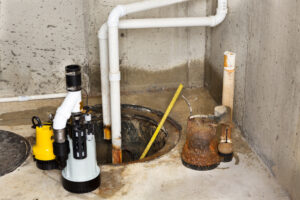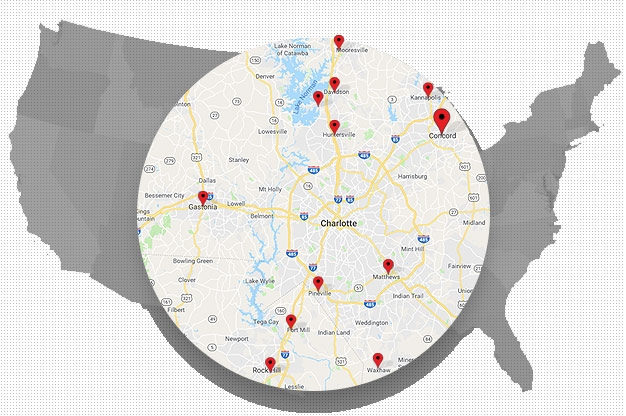Common Pitfalls to Avoid During Sump Pump Installation

Did you know that 14.6 million homes in America are at risk of flooding?
A sump pump installation is one of the most important things you can do to protect your home from water damage. Unfortunately, many people make common mistakes during this process that can lead to disaster.
This article will discuss some of the most common pitfalls to avoid during a sump pump installation. By being aware of these mistakes, you can ensure that your installation goes smoothly and protects your home from water damage.
Installing the Sump Pump in the Wrong Location
One of the most common mistakes made during the sump pump installation is choosing the wrong location for the unit.
It is important to make sure that the discharge pipe has a clear path to the outside so that water can be properly discharged away from the foundation. Failure to install the sump pump in a suitable location can result in serious problems, so it is important to take the time to choose the right spot for the unit.
By avoiding this common pitfall, you can ensure that your sump pump installation goes smoothly and your basement stays dry.
Not Installing a Backup Sump Pump
One of the most common pitfalls during sump pump installation is failing to install a backup sump pump.
While a sump pump can be a lifesaver during periods of heavy rain or snowmelt, it is important to remember that they are not failsafe. If the power goes out or the pump fails for any reason, water can quickly begin to accumulate in the basement, leading to costly damage.
For this reason, it is essential to have a backup sump pump on hand. Many homeowners choose to install an alarm system that will notify them if the water level in the sump basin begins to rise. This gives them time to take action and avoid major damage. Another option is to install a backup battery-operated sump pump.
This type of pump will kick in if the power goes out, ensuring that your basement stays dry. Regardless of which type of backup you choose, it is important to have one in place to avoid the risk of costly water damage.
Failing to Waterproof the Foundation
By pumping water out of the basement or crawl space, sump pumps help to keep your home dry and prevent mold growth. However, sump pumps cannot do their job properly if the foundation is not properly waterproofed.
If you are planning to install a sump pump, it is essential to take steps to waterproof your foundation first. Otherwise, you may find that your sump pump is constantly running, and your basement is still prone to flooding.
Waterproofing your foundation is not a difficult task, but it should not be overlooked if you want your sump pump to be effective. By taking the time to waterproof your foundation, you can help to ensure that your sump pump will be able to do its job properly.
Not Cleaning Out the Sump Pit Regularly
A sump pump is a critical component of any homes flood prevention system. To function properly, the sump pit must be clear of debris.
However, many homeowners make the mistake of not cleaning out their sump pits regularly. As a result, the pump can become clogged and fail to operate when it is needed most. To avoid this problem, it is important to clean out the sump pit at least once a year. In addition, homeowners should regularly check the pump for signs of wear and tear.
By following these simple steps, homeowners can ensure that their sump pumps are always ready to protect their homes from floods.
Connecting the Discharge Pipe to an Incorrect Drainage Spot
One of the most common mistakes made when installing a sump pump is connecting the discharge pipe to the wrong drainage spot. The discharge pipe should always be connected to a storm sewer, dry well, or other approved drainage system. If the line is instead connected to a sanitary sewer, it can cause sewage to back up into the home.
To avoid this mistake, be sure to consult with a professional before beginning the installation process. They will be able to advise you on the best way to connect the discharge pipe to ensure that your sump pump functions properly.
Operating the Sump Pump Incorrectly
A sump pump is a handy tool that can help to prevent basement flooding, but only if it is installed correctly and operated properly. A common mistake is operating the sump pump continuously, even when there is no water present. This can cause the pump to overheat and fail when you need it.
To avoid this problem, be sure to check the sump pit regularly and only run the pump when water is present.
Installing a Sump Pump: DIY or a Professional?
When it comes to sump pump installation, many homeowners are tempted to go the DIY route. However, this is not always the best course of action.
Installing a sump pump can be complicated, and it is important to make sure that the job is done properly. If the sump pump is not installed correctly, it may fail to function when you need it most. For this reason, it is best to leave the job to a professional sump pump installer. They have the experience and expertise to make sure that your sump pump is installed correctly and will be ready to protect your basement from flooding when it is needed.
Sump Pump Installation: Get Started Today
When you install a sump pump, you must avoid these common pitfalls. Failing to do so can lead to a lot of damage, so be sure to do your research and consult with a professional if needed. Doing so will help to ensure that your sump pump is both effective and reliable.
Take the time to get started on your sump pump installation today and protect your home from flooding in the future.
Are you looking for a professional sump pump installer? Contact us today! Our team of professionals has the experience and expertise to get the job done right.
Learn more about Sedona Waterproofing Solutions.
Recent Posts
- How Crawl Space Encapsulation Benefits the Environment – An Expert Guide
- 6 Ways Professionals Keep Your Crawl Space in Top Shape
- Structural Repair Solutions for Crawl Spaces, Basements, and Foundations
- Essential Crawl Space Repair Tips Every Homeowner Should Know
- The Importance of Radon Mitigation: Ensuring a Safe Living Environment for Homeowners
Categories
- Basement Mold
- Basement Waterproof Foundation
- Basement Waterproofing
- Crawl Space Dehumidifier
- Crawl Space Encapsulation Cost
- Crawl Space Repair
- Crawl Space Waterproofing
- Encapsulation
- Foundation Repair
- Foundation Waterproofing
- French Drains
- Leaky Basement
- Mold Remediation
- Mold Removal
- Radon
- Slab Jacking
- Sump Pump
- Uncategorized
- Vapor Barrier
- Water Leak
- Waterproofing
- White Mold
Archives
- June 2024
- May 2024
- March 2024
- January 2024
- June 2023
- May 2023
- April 2023
- March 2023
- February 2023
- January 2023
- December 2022
- November 2022
- October 2022
- September 2022
- August 2022
- July 2022
- June 2022
- May 2022
- March 2022
- February 2022
- January 2022
- December 2021
- November 2021
- October 2021
- September 2021
- August 2021
- July 2021
- June 2021
- May 2021
- April 2021
- March 2021
- February 2021
- January 2021
- December 2020
- November 2020
- October 2020
- September 2020
- August 2020
- July 2020
- June 2020
- May 2020
- April 2020
- March 2020
- February 2020
- January 2020
- December 2019
- November 2019
- October 2019
- September 2019
- August 2019
- July 2019
- June 2019
- May 2019

